Basic concepts
This lesson builds on the coordination skills learnt in the previous lesson, straight and level. Check with the student what the important elements of the last lesson were. Have they remembered the attitudes you looked at last time, and that all the controls need to be moved in a coordinated way?
There are a large number of power changes made during this air exercise and it is important the student reviews and practises the coordination of elevator and rudder adjustments with changes in power.
There are generally four types of climb: best angle, best rate, cruise, and recommended (for visibility and engine cooling). There are also generally three types of descent: glide, powered, and cruise.
It is recommended you teach the best rate climb and the glide, with a demonstration of the others as time permits.
The last lesson was Straight and level. Now we must learn how to climb and descend to and from straight and level flight, so that we can move towards the circuit lessons.
To enter the climb and the descent from straight and level flight.
To maintain a climb and a descent at a constant speed, constant rate, in a constant direction, and in balance.
To level off at specific altitudes.
To maintain a constant speed and direction, the aeroplane must be in equilibrium, as discussed in the straight and level lesson. We demonstrate the relationships between the four forces in the climb to show that the aeroplane is still in a state of equilibrium when climbing.
There is no requirement to prove anything in a preflight briefing. Statements illustrated with diagrams are sufficient to support the air exercise.
There is a common misconception that in the climb the lift is increased, since if lift must equal weight in level flight, it might appear logical that lift should be increased to climb, but it is not so. Drawing the forces to show that lift is not increased in the climb – but is slightly reduced – should illustrate that the aeroplane is in equilibrium during the climb.
The most important concept the student should grasp, in simple terms, is that in order for an aeroplane to climb, thrust must be equal to drag plus the rearward component of weight (T = D + RCW). The rate at which the aeroplane will climb depends on how much more power is available. Lots of additional power available will mean a high rate of climb.
From the previous lesson the student will know that there are four forces acting on the aeroplane: lift, drag, thrust, and weight, and that in straight and level flight, the aeroplane was in equilibrium. The same is true of the climb – the forces are in equilibrium. They will also know about relative airflow (RAF).
Explain that for simplicity your diagram will show the forces acting through just one point, and that the climb angle has been exaggerated for clarity.
Start by showing weight and drag and their resultant, R1 (see Figure 1).
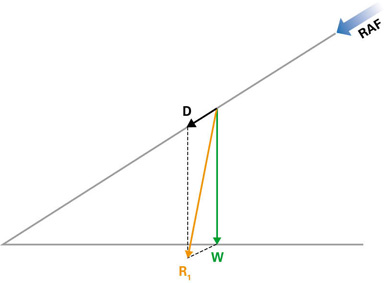
Figure 1 Weight and drag in the climb
Make the statement, “Since the aeroplane is in equilibrium, there must be a force equal and opposite to the resultant R1”.
Then, draw a line from the central point, equal and opposite to R1 and label this R2.
Resolve R2 into its two components, lift and thrust (see Figure 2).
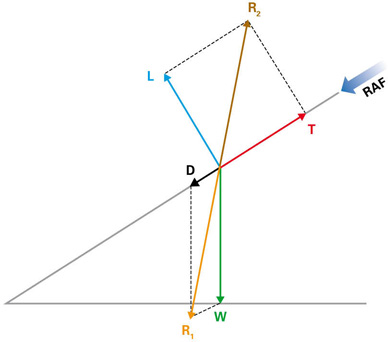
Figure 2 Lift and thrust in the climb
The relationship of the four forces is next explained, as was done in straight and level. Starting with thrust (T) and drag (D).
In straight and level flight thrust equals drag (T = D).
In a climb, thrust must increase to equal drag plus the rearward component of weight (T = D + RCW).
It should be clear to the student from your diagram, that in a steady climb, “thrust is ______ than drag.”
Why then, does the aeroplane not accelerate?
To resolve this question, break weight (W) down into its two components, with the rearward component of weight (RCW) added to the drag vector.
Thrust is equal to the drag plus the ______.
You may wish to finish off the parallelograms to tidy up your resolution of vectors. The end result looks like Figure 3.
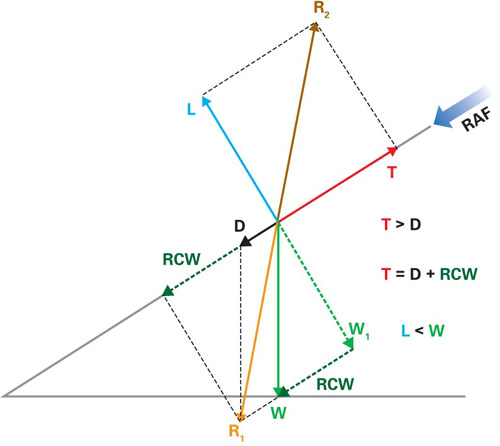
Figure 3 Forces acting on an aeroplane in the climb
Finish off by asking the student what force controls the climb. And is there a limit to that force? How might that limit the climb?
Having discussed the forces in the climb, the various factors affecting the climb performance are discussed.
Power
You have just established that the more power available, the better the climb performance.
Altitude
Engine performance (power) decreases with altitude, so there will be a limit to how high the aeroplane can climb.
In addition, anything that opposes thrust is detrimental to climb performance.
Weight
The greater the weight, the greater will be the RCW (rearward component of weight). Therefore, weight reduces the rate of climb and the angle.
Flap
Increases lift and drag and alters the lift/drag ratio. Since drag opposes thrust, any increase in drag will reduce the rate and angle of climb.
Wind
Affects only the climb angle and the distance travelled over the ground (the range) to reach a specific altitude.
| Table 1 The various configurations for the four types of climb in your training aeroplane are: |
|||
| Performance = | Power | + | Attitude |
| Best rate climb | full power | no flap | _____ knots |
| Best angle climb | full power | no flap | _____ knots |
| Cruise climb | _____ RPM | no flap | _____ knots |
| Recommended climb | _____ RPM | no flap | _____ knots |
Let the student know that you will be using the best rate climb for this lesson and you will demonstrate the others. They may experience these climbs at this stage but their application will become clearer in later lessons.
Equilibrium is required for a steady descent. If, while in level flight, the power is removed there will be no force balancing the drag. In order to maintain flying speed the nose must be lowered.
With the nose lowered and weight still acting down towards the centre of the earth, there is now a forward component of weight (FCW) that balances drag. State that for equilibrium there must be a force equal and opposite to weight. This force R is made up of lift and drag. Therefore, the aeroplane is in equilibrium (see Figure 4).
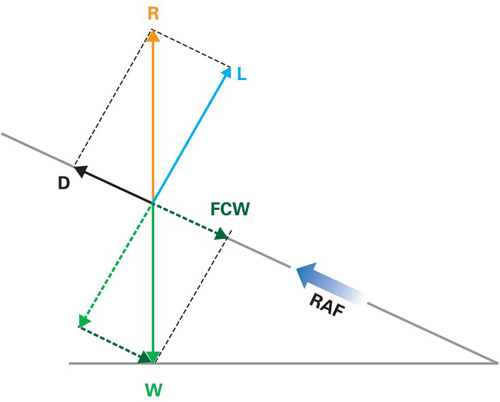
Figure 4 Forces acting on an aeroplane in the descent
Point out that the relative airflow is now coming up the slope to meet the aeroplane and therefore the angle of attack is still approximately 4 degrees.
Power
Power controls the rate of descent (ROD), the more power used, the less the ROD. Power also reduces the descent angle and increases the distance travelled over the ground, increasing the range from a given altitude.
Lift/drag ratio
The ratio of lift to drag is a measure of the efficiency of the wing. For example, the higher the lift to drag ratio, the further the aeroplane will glide (its range). Another way to think of it is the L/D ratio determines the steepness of the glide, or descent angle.
If you then change this ratio by increasing the drag (by extending flap or flying at an incorrect airspeed) a greater forward component of weight is required to balance the drag – steepening the flight path.
Weight
A change in weight does not affect the descent angle. With an aeroplane flying at its best L/D ratio, an increase in weight will increase the FCW, increasing the speed down the slope, and therefore the rate of descent, but not the descent angle.
Show this by increasing the length of the weight vector in your diagram. The FCW increases the airspeed down the slope, and the increased airspeed leads to an increase in lift and drag (with the L/D ratio remaining unchanged), and all the forces remain in equilibrium (see Figure 5).
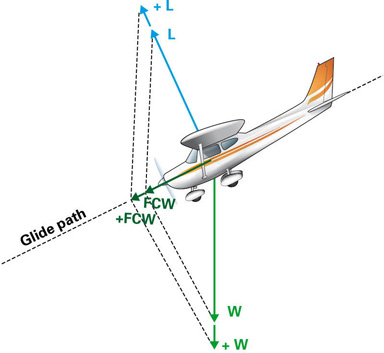
Figure 5 Effect of change in weight on descent
Flap
The increased drag produced by the flap requires an increased FCW to maintain equilibrium and thereby steepens the descent, increases the ROD, and reduces the range.
Wind
Affects only the descent angle and the range from a given altitude.
| Table 2 The various configurations for the three types of descent in your training aeroplane should be stated, for example: |
|||
| Performance = | Power | + | Attitude |
| Glide | propeller windmilling | no flap | _____ knots or _____ ft/min ROD |
| Powered | 1500 RPM (guide only) | flap as required | _____ knots or _____ ft/min ROD |
| Cruise | _____ RPM (within green range) |
no flap | _____ knots or _____ ft/min ROD |
| Teach the glide first, then the others can be taught as a variation of the glide. | |||
Situational awareness should be briefly described as a three-dimensional assessment of what has been, what is, and what will be. Explain that this skill takes time to develop, but should be practised at every opportunity.
Introduce the concept of threat and error management in simple and practical terms, as applicable to climbing and descending.
The met minima requirements for VFR flight outside controlled airspace, below 3000 feet AMSL or within 1000 feet of the ground should be revised – refer to the NZ Airspace poster and VFR Met Minima card.
Discuss minimum height requirements. For example, 500 feet AGL minimum over unpopulated areas, 1000 feet AGL minimum over built-up areas but not less than that required to glide clear of the populated area. Stipulate any club or organisation minimum safe heights.
Discuss the restrictions on lookout in relation to high and low nose attitudes. Explain that there are at least two methods for ensuring the area ahead is clear: lowering the nose every 500 feet; or making gentle S-turns. While climbing out to the training area you will use gentle S-turns.
As the exercise does not involve prolonged climbs or descents – usually no more than 500 feet – there is no need to use either method, but a good lookout must be maintained, particularly before starting the climb or descent.
Revise situational awareness in relation to aeroplane positioning, lateral and vertical limits of the training area, and VFR met minima requirements within the training area.
Revise the I’M SAFE checklist, reminding the student to complete this before leaving home.
The student has informed you of the power setting that will give the best climb performance. You need to point out that not all aeroplanes can climb on full power continuously.
If the organisation or aeroplane has an rpm limit for the prolonged climb, it should have been explained in the desired configuration above, if not then explain it here.
The detrimental effects of a prolonged glide should be discussed, for example, plug fouling and excessive cylinder-head cooling. This should lead to a discussion on the advantages of a powered descent.
The use of full rich mixture to aid engine cooling and prevent detonation at power settings above 75 percent (below 5000 feet) should be explained.
During training, it is common practice to use full rich mixture in the descent (discuss mixture control in prolonged descent from altitude).
Carburettor heat is not normally used at climb power settings because of the detrimental effect of carburettor heat on engine performance, and therefore climb performance.
In the descent, hot air is selected before reducing power because of the increased likelihood of carburettor icing.
In the climb it is normal to see an increase in oil and cylinder head temperatures with a decrease in oil (and fuel) pressure. In the descent it is normal to see a decrease in oil and cylinder-head temperatures and an increase in oil (and fuel) pressure.
The normal readings for this aeroplane in the climb and descent should be discussed. In addition, how to prevent these readings reaching their limits in an air-cooled engine should be discussed. For example: lowering the nose attitude to climb at a higher airspeed or, if necessary, levelling off for a short period, or during descent increasing power every 1000 feet to warm the engine oil and clear the spark plugs of carbon deposits, or the use of a powered descent.
Discuss the effects of trapped gases in the middle ear and sinus in relation to their expansion with increasing and decreasing altitude. In general, a comfortable rate of descent for a fit person is 500 feet per minute. Discuss and demonstrate the ‘Valsalva manoeuvre’.
Discuss the dangers of diving and flying.
Discuss the effects of altitude on vision with regard to empty sky myopia (short-sightedness) or focal resting lengths, reinforcing the need for a clean windscreen and systematic scan technique. Also discuss the effect of the background on object detection.
As a result of high power settings, noise levels will be increased and it is appropriate to discuss the effects of exposure to noise as well as how to prevent hearing damage.
Planning the lesson sequence will vary depending on such factors as an appropriate cloud base, airspace ceiling, and the ability to achieve both climbing and descending objectives.
The air exercise concentrates on improving the coordination skills learnt in the previous lessons, by entering and maintaining the climb and descent, while maintaining the aeroplane in balance, and regaining straight and level. It is particularly important to reinforce the need to balance power changes with rudder.
Introduce some basic radio calls.
Discuss the nose attitude position in relation to the horizon for the selected climb configuration.
Entry to the climb is taught as PAT, reinforcing the concept that climb performance depends on power. Since increasing power smoothly (stop the resulting yaw with rudder) will cause the nose to pitch up, power and attitude should be considered a coordinated movement, and no engine over-speed should occur.
Power + Attitude = Performance
P Power
Check mixture rich, smoothly increase power (while stopping the yaw with rudder) to full power or maximum continuous; keep straight using the reference point.
A Attitude
With elevator, select and hold the attitude for the nominated climb, maintaining wings level with aileron and balance with rudder.
T Trim
Remove excessive loads by trimming back. Once performance has been confirmed, trim accurately to maintain a constant attitude.
If the correct climb attitude is selected the airspeed will be _____ knots (exactly). If both the attitude and the power setting are correct, the resulting performance is a steady rate of climb of _____ ft/min (500–700 approx). If the wings are held level and balance maintained, the aeroplane cannot turn. Therefore, the objective of entering and maintaining the climb has been achieved.
Maintaining the climb incorporates the LAI scan, with those instruments pertinent to the climb being scanned most frequently for accurate flight.
If the airspeed is not correct, then the attitude is incorrect, and performance will be affected. Emphasise that the airspeed is altered by reference to attitude, and that due to inertia once a change has been made, a smaller change in the opposite direction will be required to hold the new attitude. These corrections are commonly stated as “change – check – hold – trim”.
To regain straight and level from a climb, the mnemonic APT is used.
A Attitude
Anticipate the required altitude by approximately 10 percent of the rate of climb, ie, a climb of 500 feet per minute will require an anticipation of 50 feet.
With the elevator, select and hold the level attitude. The airspeed will increase only gradually, because the aeroplane must overcome inertia. To assist this process, climb power is maintained until a suitable airspeed has been achieved. As the airspeed increases the aeroplane’s nose will want to pitch up, requiring subtly increasing forward pressure on the control column to maintain the correct attitude. The wings should be kept level in relation to the horizon, and rudder adjusted to keep straight on the reference point.
P Power
Through _____ knots, decrease power to _____ rpm. The resultant pitch change and yaw must be compensated for, remember to use smooth throttle movements.
T Trim
Accurate trim cannot be achieved until equilibrium has been established. However, obvious control loads may be reduced immediately, then followed by accurate trimming.
Once the instruments confirm level flight is being maintained, the aeroplane can be accurately trimmed to maintain the selected attitude and reference point.
Discuss the nose attitude position in relation to the horizon for the descent.
Entry to the descent is taught as PAT.
Power + Attitude = Performance
P Power
Check the mixture is rich, carburettor heat HOT, smoothly close the throttle and keep straight using the reference point.
A Attitude
With the power reduction, the nose will want to pitch down. With elevator, hold the level attitude until the nominated descent airspeed is almost reached (allowing for inertia), and then select and hold the attitude for the nominated descent. Maintain wings level with aileron, and balance with rudder.
T Trim
Remove excessive load by trimming (usually backwards) and once the performance is achieved, trim accurately to maintain a constant attitude.
With the correct descent attitude selected the airspeed will be _____ knots exactly. If the attitude is correct, and the power is set correctly, the resulting performance is a steady rate of descent of _____ ft/min (approx 500). If the wings are held level and balance maintained, the aeroplane cannot turn. Therefore the objective of entering and maintaining the descent has been achieved.
Maintaining the descent incorporates the LAI scan, with those instruments pertinent to the descent being scanned most frequently for accurate flight.
If the airspeed is not correct then the attitude is incorrect. Emphasise that the airspeed is altered by reference to attitude and that, due to inertia, once a change has been made a smaller change in the opposite direction will be required to hold the new attitude. “Change – check – hold – trim.”
To regain straight and level from the descent, the mnemonic PAT is used. Because of inertia, power leads the sequence to arrest the descent.
P Power
Anticipate the required altitude by approximately 10 percent of the rate of descent, ie, a descent of 500 feet per minute will require an anticipation of 50 feet.
Carburettor heat COLD, smoothly increase power to cruise power (balancing with rudder).
As airspeed increases, rpm may increase slightly, requiring another throttle adjustment.
The power change will cause the nose to yaw, if not corrected with rudder, and to pitch up. The pitch-up tendency encourages a coordinated movement because the next step is...
A Attitude
With the elevator, select and hold the level attitude. Maintain wings level with aileron, and balance with rudder.
T Trim
Remove obvious loads, and when straight and level has been confirmed through LAI, trim accurately to hold the correct attitude.
Ask the student to carry out the preflight inspection while you observe.
Ask the student to taxi, and point out the obstructions and possible threats as they go. Depending on the level of comfort of the student at this stage of their training, you may like to introduce the checklists to them and get them to follow you through, or do the checks as you call them out.
Depending on their level of comfort, you may either want to let the student complete the take-off, while you follow them through, or talk them through the experience.
On the way out to the training area demonstrate the climbing attitude relevant to the horizon and the corresponding speed. Ask the student to point out the landmarks they were shown in the last lesson.
Review straight and level with emphasis on a specific altitude.
From straight and level nominate a reference point and altitude to climb to – considering cloud and overlying airspace restrictions. Demonstrate the climb and the level off to resume straight and level at a specific altitude. Anticipation of the altitude is required.
The student should now practise the entry to the climb, maintaining the climb and the level out until proficient. Then have the student establish the aeroplane in another climb and demonstrate different climb attitudes and corresponding speeds, noting rate of climb effect, and the effect of flap, especially flap retraction in a climb, in preparation for the go around in the circuit lessons. Once it has been demonstrated, encourage the student to make the flap selections and note the effect it has on the attitude, airspeed, rate of climb and trim.
Have the student establish in straight and level on a reference point. Nominate a reference point and altitude to descend to – considering minimum height restrictions. Remind the student that you will be using the glide, with the throttle closed. Demonstrate the glide and the level off to resume straight and level at a specific altitude. Anticipation of the altitude is required.
The student should now practise the entry to the descent, maintaining the descent and the level out. Once the student has completed the sequence, have the student establish the aeroplane in another descent and demonstrate the effect of power and flap. Once it has been demonstrated, encourage the student to make the flap selections and note the effect it has on the attitude, airspeed, rate of descent and trim.
Practise the climb and descent as required, so that the student is comfortable with the entry, maintenance, and exit, and coordinates rudder with power changes.
On the way back to the aerodrome, demonstrate the cruise descent, including the selection of power and rate of descent appropriate for the conditions. Remind the student that there will be time to practise this on every flight.
The next lesson will be turning. Ask the student to read any notes they have on turns and to remember the attitudes they saw in this lesson.
Ask the student what they learnt about power changes and rudder use.
Climbing and descending whiteboard layout [PDF 106 KB]
Revised 2023